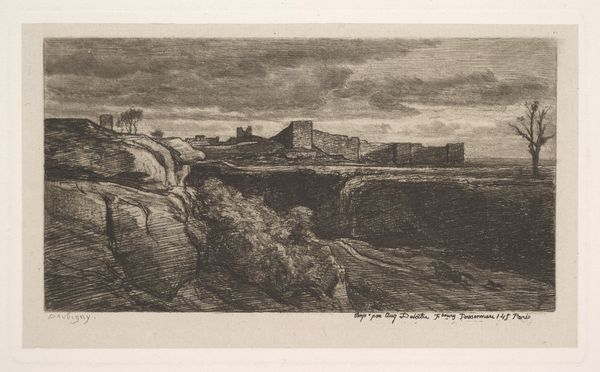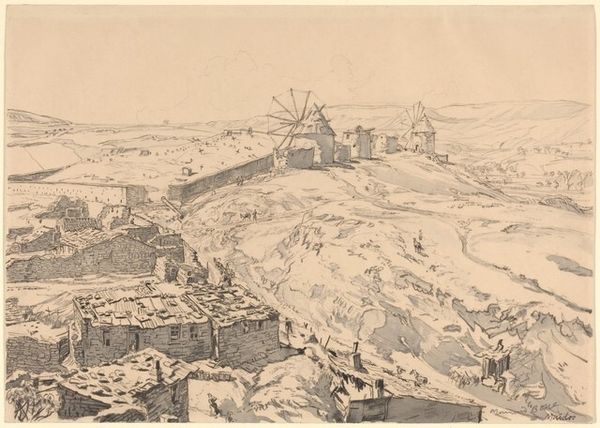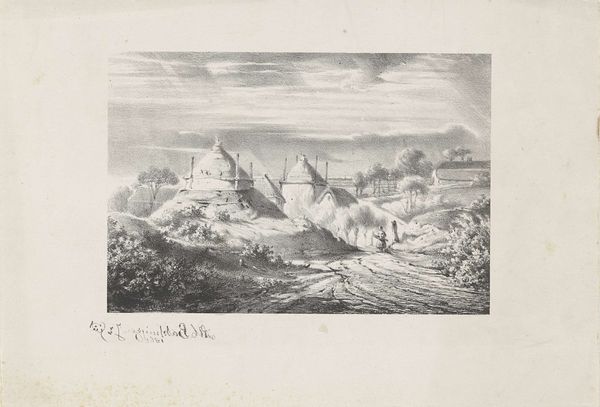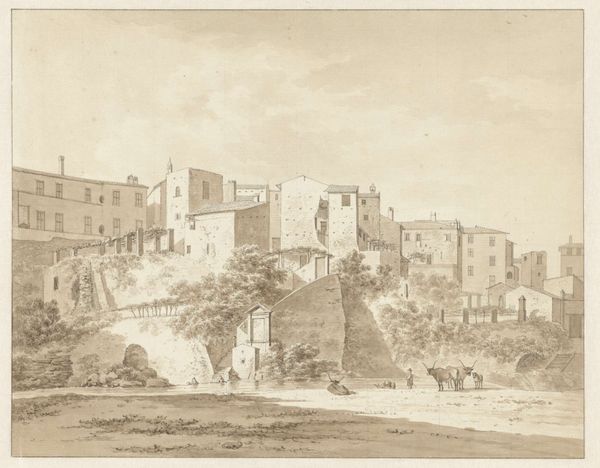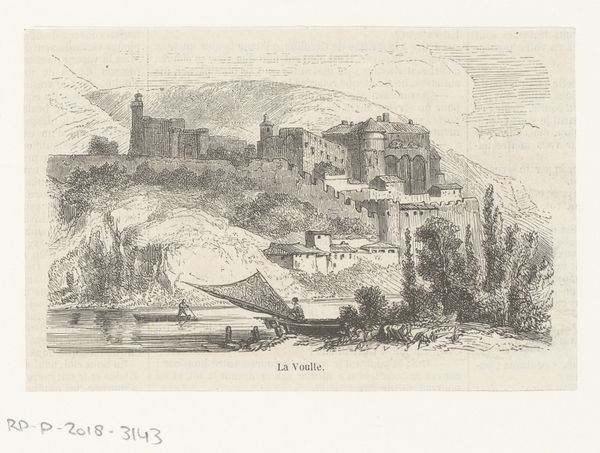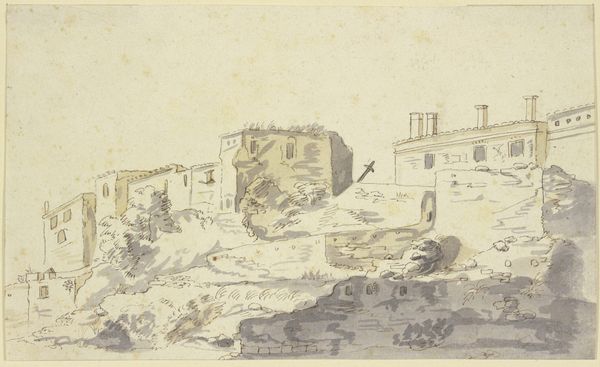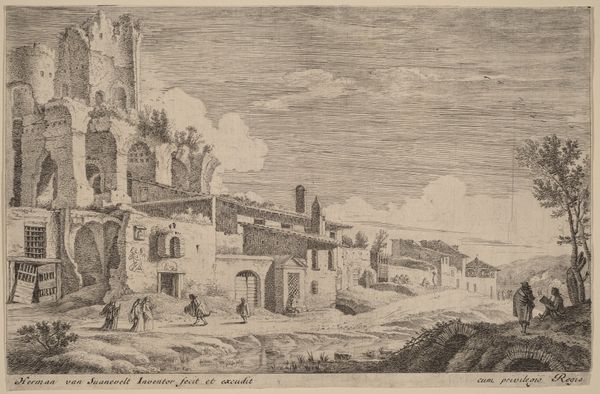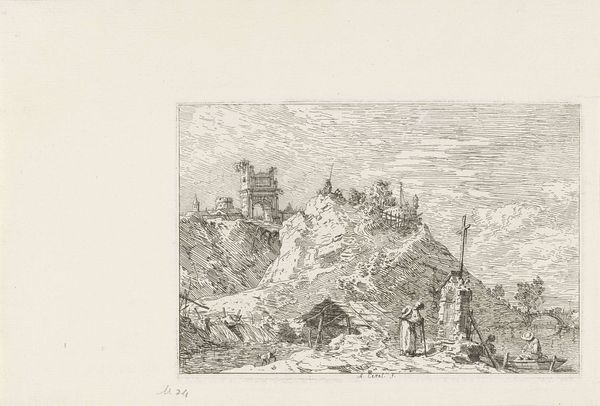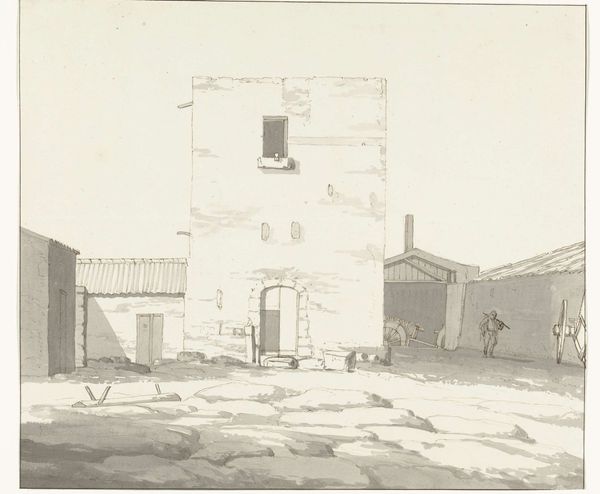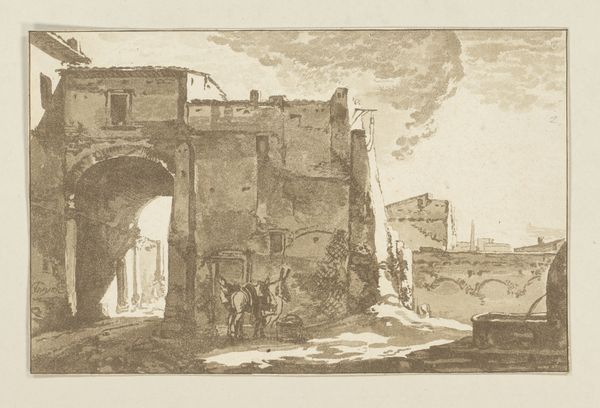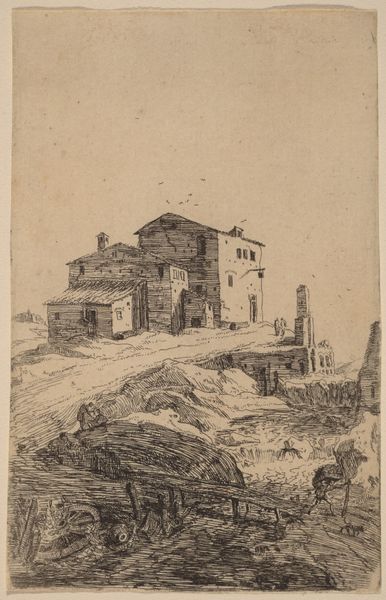
drawing, pencil
#
drawing
#
pencil sketch
#
landscape
#
house
#
pencil
#
cityscape
#
genre-painting
#
academic-art
#
realism
#
building
Dimensions: 24.1 x 15 cm
Copyright: Public domain
Editor: Here we have James Tissot's "A Corner of the Village of Siloam," created in 1889 with pencil. The level of detail achieved with just pencil is astonishing. What story does this piece tell you? Curator: What interests me most is how Tissot depicts the built environment of Siloam not just as scenery but as a product of specific labor and resource constraints. Look closely at the varying textures – the roughly hewn stones, the layered construction of walls. Do you think this says something about how art-making parallels the manual labor of construction? Editor: It's interesting how the medium itself, humble pencil, echoes the everyday nature of the village scene, don't you think? The lack of color feels very grounded and… real. Curator: Precisely! Tissot is choosing a very specific process, prioritizing accessible materials. It invites us to question the romantic idealizations often associated with landscape art and religious settings. Consider how the consumption of art, typically for the elite, is here, rendered with the marks of everyday work. Editor: I see. So the very act of using pencil, and showing the raw, unpolished texture of the village, critiques the traditional high art world by showcasing the value in these overlooked, mundane aspects of life. Curator: Exactly. Think about how this pencil sketch relates to other depictions of Jerusalem at the time, considering also its consumption. This pushes us to confront who controls artistic production and the narrative around sacred sites. Editor: That gives me a lot to think about! It changes how I see the subject itself, and shifts focus onto the socio-economic conditions and material choices. Curator: Yes, recognizing art as not just an object but also a process—tied to labor, class, and the material conditions of its creation and viewing—broadens our understanding immensely.
Comments
No comments
Be the first to comment and join the conversation on the ultimate creative platform.

